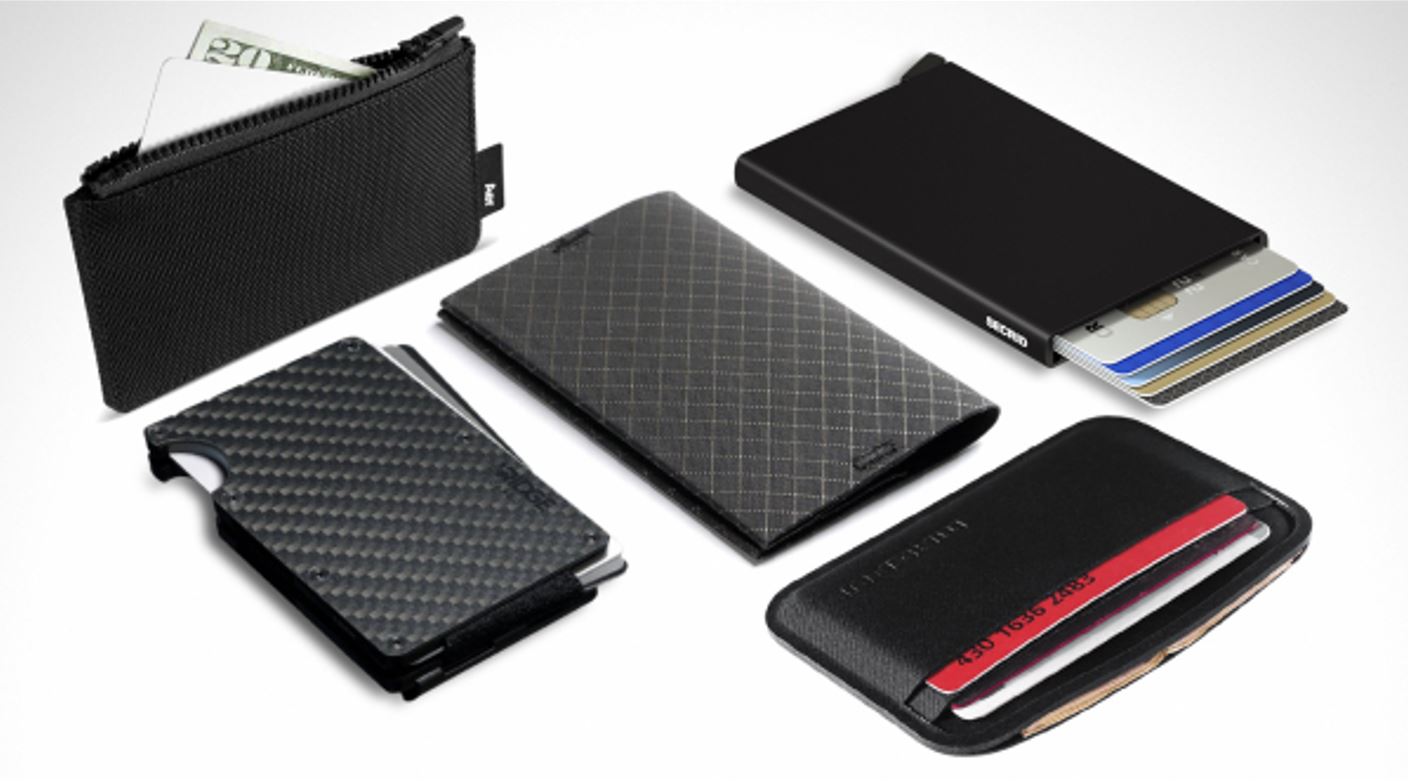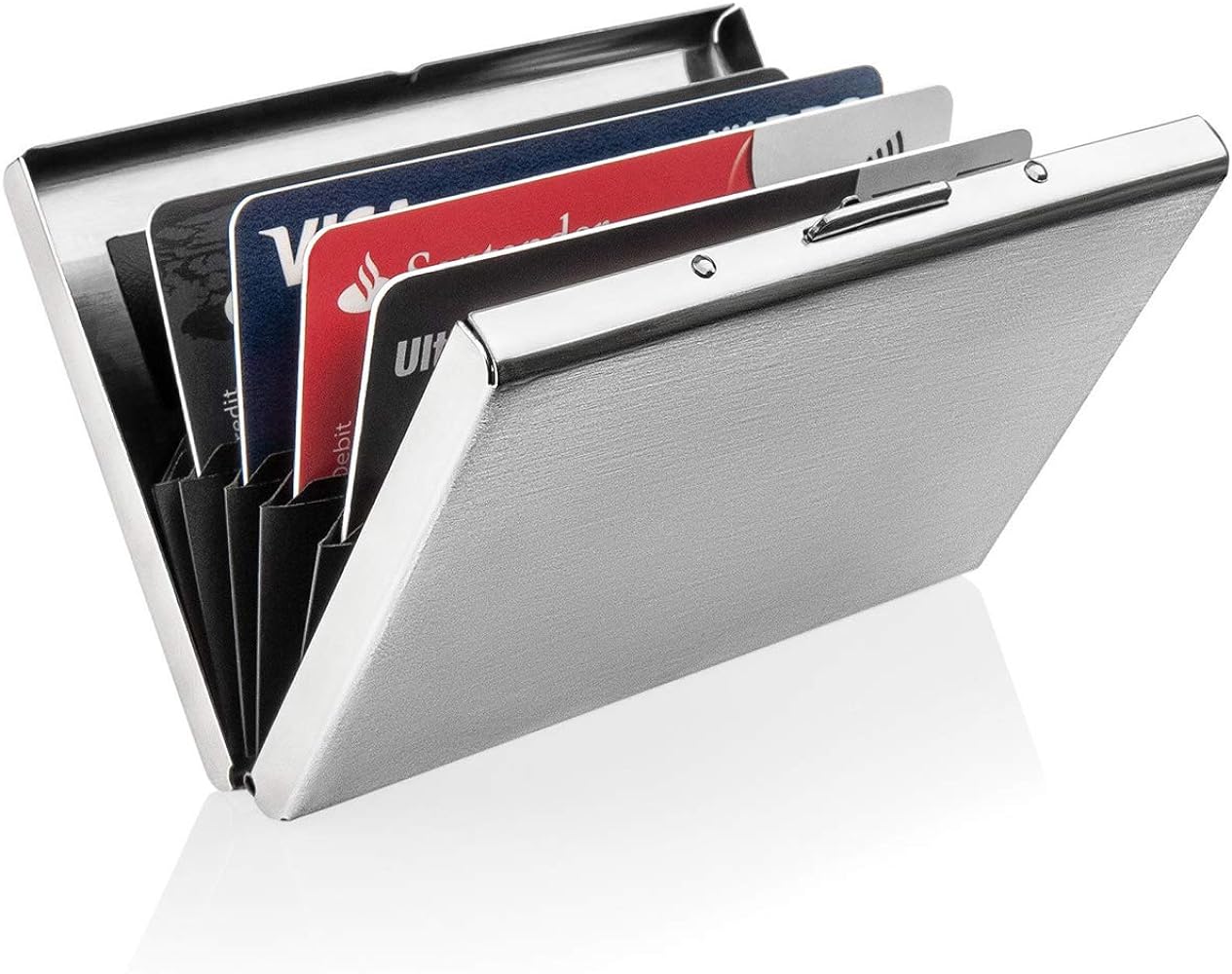Introduction
Radio Frequency Identification (RFID) is a technology that has revolutionized the way objects are identified, tracked, and managed. With its ability to wirelessly transmit data through radio waves, RFID has become an integral part of various industries, ranging from logistics and supply chain management to retail and healthcare.
At its core, RFID enables objects to be uniquely identified and tracked using electronic tags, often referred to as RFID tags or transponders. These tags consist of a small microchip and an antenna, which communicate with RFID readers to exchange information.
The widespread adoption of RFID technology has led to a plethora of benefits. It has improved inventory management, enhanced operational efficiency, and increased the accuracy of data collection. Furthermore, RFID has enabled real-time visibility and monitoring of assets and products, facilitating better decision-making and streamlining business processes.
In this article, we will delve into the definition of RFID, explore how it works, discuss the components of an RFID system, delve into different types of RFID technology, and examine its various applications. Additionally, we will highlight the advantages and disadvantages of RFID, address privacy and security concerns, and look at the future of this innovative technology.
Whether you are a business owner, a technology enthusiast, or simply curious about the advancements in the field of identification and tracking, this article will provide you with a comprehensive understanding of RFID and its implications in today’s world.
Definition of RFID
Radio Frequency Identification (RFID) is a technology that enables the wireless identification and tracking of objects using radio waves. It involves the use of electronic tags, also known as RFID tags or transponders, which contain a small microchip and an antenna. The microchip stores data and communicates with RFID readers via the antenna. When an RFID reader emits radio waves, the RFID tag detects the signals and responds by transmitting its unique identification code, allowing for automatic identification and data capture.
Unlike barcode systems that require line-of-sight scanning, RFID technology allows for non-contact, wireless communication between the tags and readers. This eliminates the need for manual intervention and enables the swift and accurate identification of objects even in challenging environments.
RFID tags can be categorized into two types: active tags and passive tags. Active tags have their power source and can actively transmit signals, making them suitable for long-range applications. On the other hand, passive tags do not have their power source and rely on the energy emitted by the RFID reader to power them. Passive tags are cost-effective and widely used for short-range applications.
RFID technology is utilized across various industries and applications. It has transformed supply chain management by enabling better inventory control, reducing losses, and enhancing logistics operations. In the retail industry, RFID tags contribute to improved stock management, preventing stockouts and ensuring accurate pricing. In healthcare, RFID systems facilitate the tracking of medical equipment, medication, and patient records, enhancing efficiency and patient safety.
Overall, RFID technology plays a vital role in automating identification and tracking processes, providing real-time data, and optimizing operations across industries. With its ability to capture information wirelessly and automate data collection, RFID has become an essential tool for enhancing productivity and improving business outcomes.
How RFID Works
RFID technology operates through the interaction between RFID tags and RFID readers. The process involves the following steps:
- Tag Initialization: Each RFID tag is assigned a unique identification code that is programmed into the embedded microchip. This code serves as the tag’s electronic identity.
- Tag Activation: When an RFID reader emits radio waves, the energy is captured by the antenna of a passive RFID tag. This energy powers the microchip on the tag temporarily, allowing it to respond.
- Tag Response: The activated RFID tag responds to the radio wave signals by transmitting its unique identification code back to the RFID reader. The response can be in the form of a radio frequency signal or a modulated signal.
- Reader Reception: The RFID reader captures the signal transmitted by the RFID tag. It decodes the received information, extracting the tag’s identification code and any additional data stored on the tag.
- Data Processing: The RFID reader processes the captured data and relays it to a connected computer system or database for further analysis and storage. This enables real-time visibility and data integration with various business processes.
RFID technology offers two main modes of operation: passive RFID and active RFID.
Passive RFID: In passive RFID systems, the RFID tags rely on the energy emitted by the RFID reader to power their microchips temporarily. Passive tags are cost-effective and are commonly used for short-range applications, such as inventory management and access control. They have a limited read range but are ideal for tracking smaller objects and assets.
Active RFID: Active RFID systems utilize tags that have their power source, typically in the form of a battery. These tags actively transmit signals at regular intervals, allowing for longer read ranges and continuous tracking capabilities. Active RFID is commonly used for tracking vehicles, monitoring assets in large areas, and locating high-value items.
RFID technology has revolutionized various industries by enabling automatic identification, real-time data capture, and improved operational efficiency. With its ability to wirelessly track and manage objects, RFID continues to play a crucial role in streamlining processes and enhancing productivity in today’s fast-paced world.
Components of an RFID System
An RFID system comprises several key components that work together to enable the identification and tracking of objects. These components include:
- RFID Tags: RFID tags, also known as transponders, are small electronic devices that contain a microchip and an antenna. They are affixed to objects that need to be identified and tracked. Each tag has a unique identification code that can be read by RFID readers. RFID tags can be active or passive, depending on their power source and transmission capabilities.
- RFID Readers: RFID readers, also called interrogators, are devices that emit radio waves and capture the signals transmitted by RFID tags. These readers can read and write data to the tags, facilitating two-way communication. RFID readers are available in various forms, including handheld devices, stationary readers, and integrated systems.
- Antennas: Antennas play a crucial role in an RFID system as they are responsible for transmitting and receiving radio waves. The type and configuration of antennas depend on the specific application and the desired read range. Antennas come in different designs, such as linear, circular, and phased array, to accommodate various environmental conditions and tag orientations.
- Middleware: Middleware serves as a bridge between the RFID hardware and the software applications. It manages the flow of data between the RFID readers and the backend systems, such as inventory management software or database systems. Middleware helps process and filter the collected data, ensuring its accuracy and reliability.
- Software Applications: RFID systems rely on software applications to interpret and make sense of the data captured by the RFID readers. These applications can include inventory management software, asset tracking systems, access control software, and other specialized applications. The software enables organizations to leverage the data collected from RFID tagging for various purposes, such as improving supply chain visibility, enhancing security, and optimizing operational efficiency.
- Integration Interfaces: Integration interfaces allow an RFID system to connect and interact with other systems or devices. This enables seamless integration with existing business processes and IT infrastructure. Integration interfaces can include APIs (Application Programming Interfaces), web services, or other communication protocols.
By combining these components, an RFID system enables automatic identification, tracking, and data collection. The system captures real-time information, enabling businesses to make timely decisions, improve operational efficiency, and enhance customer satisfaction.
Types of RFID Technology
RFID technology is available in different frequencies and configurations, each with its own advantages and applications. The main types of RFID technology include:
- Low-Frequency (LF) RFID: LF RFID operates in the frequency range of 30 kHz to 300 kHz. It is commonly used for short-range applications, such as access control systems and animal tracking. LF RFID provides good performance in environments with high moisture or metal content, making it suitable for harsh conditions.
- High-Frequency (HF) RFID: HF RFID operates in the frequency range of 3 MHz to 30 MHz. It is widely used for applications like payment systems, inventory management, and library book tracking. HF RFID offers a higher data transfer rate compared to LF RFID, enabling faster and more efficient data exchange.
- Ultra-High-Frequency (UHF) RFID: UHF RFID operates in the range of 300 MHz to 3 GHz. It is the most commonly used RFID technology due to its longer read range and faster data transfer capabilities. UHF RFID is employed in applications such as supply chain management, asset tracking, and retail inventory management.
- Microwave RFID: Microwave RFID operates at frequencies above 3 GHz. It offers long-range capabilities and is commonly used for applications like toll collection, vehicle tracking, and long-distance asset tracking. Microwave RFID provides high speed and accuracy for tracking objects over large distances.
RFID technology can also be classified based on the read-only or read-write capability of the tags. Read-only tags are preprogrammed with the identification code and cannot be modified, while read-write tags allow for data to be written and rewritten on the tag’s memory. This flexibility enables dynamic information retrieval and updates, making read-write RFID tags suitable for applications that require variable data storage, such as temperature monitoring or maintenance records.
Another classification of RFID technology is based on the form factor of the tags, including labels, cards, wristbands, and even implantable tags. These different form factors allow for easy integration into various objects or applications, expanding the versatility of RFID technology.
Choosing the right type of RFID technology depends on factors such as read range requirements, environmental conditions, data transfer speed, and the desired application. Each type of RFID technology offers distinct capabilities that can be tailored to meet specific business needs and enhance operational efficiency.
Applications of RFID
RFID technology is highly versatile and has found its application in various industries and sectors. Some of the key applications of RFID include:
- Supply Chain Management: RFID technology plays a crucial role in supply chain management by improving visibility and traceability of products throughout the entire supply chain. It enables real-time inventory management, reduces stockouts, prevents counterfeit products, and enhances overall efficiency in logistics operations.
- Retail and Inventory Management: In the retail industry, RFID tags are used to track inventory, streamline stock management, replenish shelves accurately, and reduce theft and loss. RFID technology enables retailers to have real-time visibility into product availability, enabling them to deliver excellent customer service.
- Healthcare: RFID systems are widely used in healthcare facilities to track medical equipment, monitor patient movement, and enhance medication management. RFID tags on medical supplies facilitate accurate inventory control, reduce errors in handling and administration of medications, and improve patient safety.
- Asset Tracking: RFID technology enables efficient tracking and management of assets, such as vehicles, high-value equipment, and tools. It provides real-time visibility into asset location, enhances asset utilization, prevents loss, and optimizes maintenance schedules, reducing operational costs.
- Access Control and Security: RFID-based access control systems are extensively used in buildings, campuses, and secure facilities. RFID cards or tags allow authorized individuals to gain access to restricted areas, enhancing security and preventing unauthorized entry.
- Livestock and Agriculture: RFID tags are utilized in the livestock industry for animal identification and tracking. These tags enable livestock monitoring, disease control, breeding management, and efficient tracking of animals during transportation. In agriculture, RFID technology assists in inventory control, asset tracking, and supply chain optimization.
- Document and File Tracking: RFID tags can be integrated into documents, files, or folders to track their movement and improve document management processes. This helps organizations in efficiently locating and managing critical documents, reducing time wasted in searching and enhancing overall productivity.
These are just a few examples of the wide range of applications of RFID technology. As the technology continues to advance, new and innovative applications will emerge, further revolutionizing industries and improving operational efficiencies.
Advantages and Disadvantages of RFID
RFID technology offers several advantages that have contributed to its widespread adoption across various industries. However, it also has certain limitations and disadvantages. Let’s explore both sides:
Advantages of RFID:
- Automatic and Efficient Data Capture: RFID enables automatic identification and data capture without the need for line-of-sight scanning or manual intervention. This results in improved efficiency, reduced labor costs, and faster data collection.
- Real-time Visibility and Tracking: RFID provides real-time visibility of objects, assets, or inventory throughout the supply chain or within a facility. This improves inventory management, reduces stockouts, and enables timely decision-making.
- Increased Accuracy: RFID technology offers higher accuracy compared to traditional barcode systems, which can be prone to errors due to manual scanning or damaged labels. RFID eliminates errors caused by manual data entry and provides precise and reliable data.
- Enhanced Security: RFID systems can incorporate encryption and authentication mechanisms, making it difficult for unauthorized individuals to clone or tamper with tags. This enhances security and mitigates the risks associated with counterfeiting and theft.
- Improved Operational Efficiency: RFID technology streamlines processes, reduces manual labor requirements, and eliminates paperwork. It enables real-time data capture, automates workflows, and improves overall operational efficiency.
Disadvantages of RFID:
- High Implementation Costs: The initial investment required for implementing an RFID system can be significant. This includes the cost of tags, readers, software, and integration with existing systems. However, the cost continues to decrease as the technology evolves.
- Environmental Limitations: Certain environments, such as those with high moisture, metal or radio frequency interference, can negatively affect the performance of RFID systems. These limitations may require additional measures or specialized tags and readers to ensure reliable operation.
- Privacy Concerns: RFID technology raises privacy concerns as it enables remote tracking and identification. An individual’s personal information or purchase habits may be stored on RFID tags without their knowledge or consent. Implementers of RFID systems must address these concerns and comply with privacy regulations.
- Standardization Challenges: RFID technology operates at various frequencies and standards, leading to interoperability challenges between different systems. This can result in compatibility issues and may require additional efforts and investments to ensure seamless integration.
While RFID offers numerous benefits, it is essential to consider the potential limitations and address them appropriately to fully leverage its advantages. Transparency, security measures, and adherence to privacy regulations are vital in building trust and ensuring the ethical implementation of RFID technology.
Privacy and Security Concerns
While RFID technology offers numerous benefits, it also raises concerns regarding privacy and security. As RFID systems become more pervasive, it is essential to understand and address these concerns to ensure responsible and ethical implementation. Here are some key privacy and security considerations associated with RFID technology:
Privacy Concerns:
- Unauthorized Tracking: RFID tags can be read remotely without requiring user consent or awareness. This raises concerns about individuals being tracked or monitored without their knowledge, potentially compromising their privacy.
- Data Security: The information stored on RFID tags, such as unique identification codes or personal data, can be vulnerable to interception or unauthorized access. Safeguarding this data is crucial to protect individuals’ privacy and prevent identity theft or misuse.
- Data Retention and Usage: Organizations using RFID technology must clearly define how long they intend to retain data collected from RFID tags and how it will be used. Transparent data policies help mitigate privacy concerns and foster trust among individuals.
- Location Privacy: RFID systems that track the movement of objects or individuals can pose potential risks to location privacy. It is important to establish appropriate policies and safeguards to protect sensitive location information from unauthorized access or misuse.
Security Concerns:
- Cloning and Counterfeiting: RFID tags can be vulnerable to cloning or tampering, which can lead to counterfeit products or unauthorized access to secure areas. Implementing robust security measures, such as encryption and authentication protocols, helps mitigate these risks.
- Data Integrity: Integrity of the data exchanged between RFID tags and readers is critical to prevent unauthorized modifications or data corruption. Implementing secure communication protocols and ensuring data validation mechanisms are in place helps maintain the integrity of the system.
- Network Vulnerabilities: The connectivity between RFID readers and backend systems introduces potential vulnerabilities that could be exploited by malicious actors. Implementing secure network architecture, regularly updating software, and conducting rigorous security audits help mitigate these risks.
- Data Breaches and Cyber Attacks: RFID systems are not immune to data breaches or cyber attacks. It is crucial to implement robust cybersecurity measures, such as access controls, network segregation, and encryption, to protect sensitive data from unauthorized access or malicious activities.
Addressing privacy and security concerns in RFID systems requires a holistic approach that includes technical measures, policy frameworks, and user education. Striking the right balance between the benefits of RFID technology and the protection of individuals’ privacy and security is essential for responsible implementation.
Future of RFID Technology
The future of RFID technology looks promising, with advancements and innovations on the horizon that will further enhance its capabilities and broaden its applications. Here are some key trends and developments to look out for:
- Improved Read Range and Accuracy: RFID systems are constantly evolving to offer longer read ranges and improved accuracy. This will enable the tracking and identification of objects over greater distances and in more challenging environments, opening up new opportunities in industries such as transportation, warehousing, and asset management.
- Miniaturized and Flexible Tags: The size and form factor of RFID tags are becoming smaller and more versatile, allowing for seamless integration into a wide range of objects and applications. Miniaturized and flexible tags will enable new use cases in industries such as fashion, healthcare, and manufacturing.
- Internet of Things (IoT) Integration: RFID technology is expected to play a significant role in the broader context of the Internet of Things (IoT). Integration with IoT platforms will enable seamless data sharing, real-time analytics, and interoperability across a wide spectrum of connected devices and systems.
- Advanced Data Analytics: The vast amount of data collected by RFID systems presents an opportunity for advanced data analytics. Machine learning algorithms and artificial intelligence will be employed to derive valuable insights from RFID-generated data, improving supply chain visibility, optimizing inventory management, and enhancing operational efficiency.
- Blockchain Integration: The integration of RFID technology with blockchain platforms is anticipated to enhance data security, traceability, and transparency. Blockchain can provide an immutable and decentralized record of RFID tag interactions, offering increased trust and reliability in supply chain management and other applications.
- Energy Harvesting and Sensor Integration: Future RFID systems may incorporate energy harvesting techniques, enabling tags to recharge using ambient energy sources for prolonged lifespan and sustainability. Additionally, the integration of sensors into RFID tags will enable the collection of additional data beyond identification, facilitating applications in environmental monitoring, healthcare, and more.
The future of RFID technology is tightly intertwined with other emerging technologies, such as 5G connectivity, edge computing, and edge AI. The combination of these technologies will further drive the adoption of RFID systems and enable new use cases that were previously unimaginable.
As RFID technology continues to evolve and mature, it will become even more integral to industries worldwide, revolutionizing processes, enabling data-driven decision-making, and driving efficiencies. Exciting times lie ahead as RFID technology propels us towards a more connected, intelligent, and efficient future.
Conclusion
RFID technology has revolutionized the way objects are identified, tracked, and managed across various industries. Its ability to wirelessly transmit data through radio waves has paved the way for improved inventory management, enhanced operational efficiency, and real-time visibility of assets and products. RFID systems offer automatic identification, fast data capture, and seamless integration with existing business processes.
Throughout this article, we explored the definition and working principles of RFID technology, the components of an RFID system, different types of RFID technology, and its applications across industries. We also discussed the advantages of RFID, including efficient data capture, real-time tracking, and enhanced accuracy. However, it is crucial to acknowledge the privacy and security concerns associated with RFID technology and to address them responsibly through transparent policies, data encryption, and data retention practices.
The future of RFID technology looks promising, with advancements in read range, tag miniaturization, and data analytics. Integration with IoT, blockchain, and other emerging technologies will further enhance its capabilities and broaden its applications. The potential to combine RFID technology with energy harvesting and sensor integration opens up exciting possibilities for sustainability and enhanced functionality.
As RFID technology continues to evolve, it is essential for individuals, businesses, and policymakers to strike a balance between reaping the benefits of RFID and addressing the associated privacy and security concerns. Responsible implementation and adherence to ethical practices will ensure that RFID technology can be utilized to its full potential, delivering value, efficiency, and innovation in a wide range of industries.

























